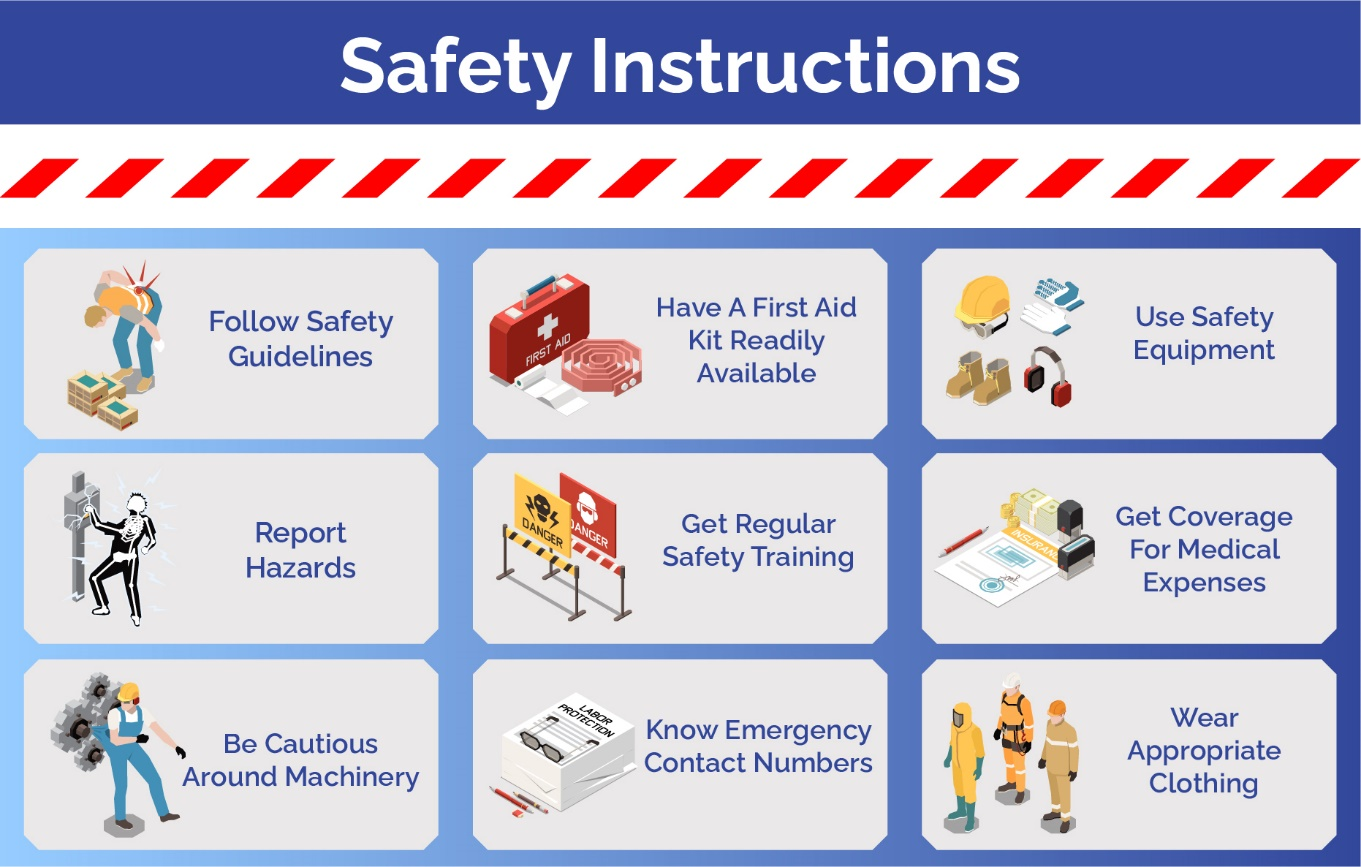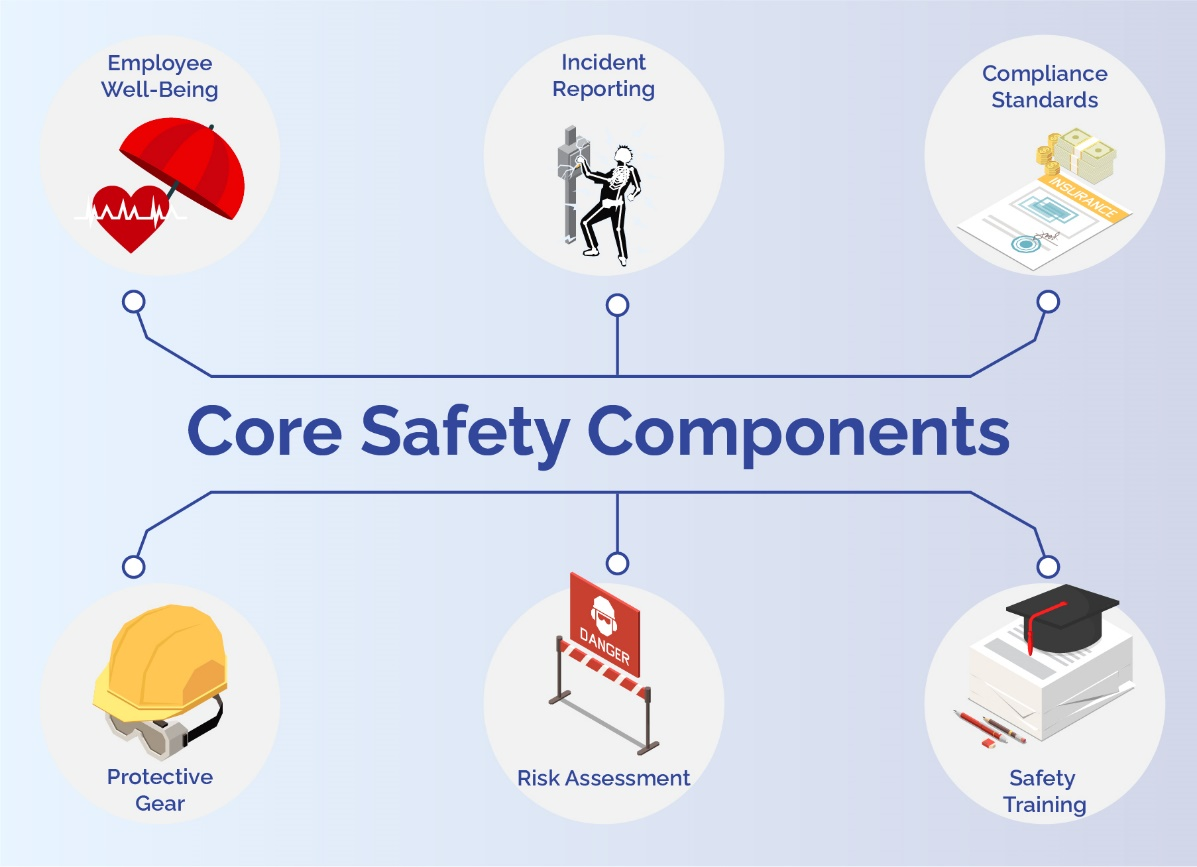In today’s fast-paced work environments, safety is often perceived as secondary to productivity and efficiency. However, a culture that prioritizes workplace safety is not only a regulatory requirement but also a critical factor in an organization’s success. When safety becomes an integral part of the workplace culture, it can lead to fewer accidents, higher employee morale, and overall enhanced performance. This comprehensive guide explores effective strategies for building a strong safety culture and actively engaging employees in proactive safety behaviours.
The Essence of a Safety Culture:
A safety culture represents the shared values, beliefs, and practices that define how safety is managed and prioritized within an organization. Establishing a robust safety culture goes beyond mere compliance with safety regulations; it involves embedding safety into every aspect of daily operations and decision-making. Employees who see that their safety is genuinely valued are more likely to adopt safe practices and actively participate in maintaining a safe working environment.

Clear and accessible workplace safety instructions help ensure all employees understand and follow safety protocols effectively
Engaging Employees in Workplace Safety:
Engaging employees in workplace safety is a fundamental aspect of building a safety culture. When employees are actively involved in safety initiatives, they are more likely to embrace and advocate for safe practices. Here are some effective strategies for engaging employees:
Open Communication Channels:
Effective communication is a cornerstone of a safety culture. Employees must feel comfortable discussing safety concerns, suggesting improvements, and reporting potential hazards without fear of retaliation. Establishing open communication channels involves more than just having a suggestion box; it requires creating a culture where safety discussions are encouraged and valued. Regular safety meetings, an open-door policy with management, and anonymous reporting systems are all effective ways to foster open communication. Ensuring that employees know their feedback is taken seriously and acted upon is crucial for promoting a proactive safety mindset.
Comprehensive Training Programs:
Training is essential for equipping employees with the knowledge and skills needed to maintain a safe working environment. Offering a variety of training programs tailored to different needs can significantly impact workplace safety. Basic first aid training is fundamental for all employees, ensuring they are prepared to handle medical emergencies. Advanced first aid courses and intermediate first aid courses offer more in-depth knowledge and skills for dealing with complex medical situations. Additionally, specialized training such as fall protection training and confined space training addresses specific hazards and ensures that employees are well-prepared for the unique risks associated with their roles.
Encouraging Employee Participation:
Active involvement in safety programs and decision-making processes fosters a sense of ownership and accountability among employees. Encouraging participation can be achieved through several methods. Forming safety committees with employee representatives allows staff to have a voice in safety decisions and initiatives. Engaging employees in safety audits and risk assessments provides valuable insights and helps identify potential hazards. Additionally, involving employees in safety drills and simulations ensures they are familiar with emergency procedures and can respond effectively in real situations. By giving employees a stake in safety efforts, they are more likely to take personal responsibility for maintaining a safe workplace.
Recognizing and Rewarding Safe Behavior:
Recognition and rewards are powerful motivators for reinforcing safe behaviour. Implementing a reward system that acknowledges employees who consistently follow safety protocols or report potential hazards can encourage others to do the same. This recognition can take various forms, from verbal praise and certificates to tangible rewards such as gift cards or additional time off. Celebrating safety milestones and achievements, such as completing a safety training program or achieving a period without accidents, helps build a positive safety culture and motivates employees to maintain high safety standards.
Regular Safety Audits and Feedback:
Regular safety audits are crucial for identifying potential hazards and areas for improvement. These audits should be conducted systematically and followed by actionable feedback. Engaging employees in the audit process and seeking their input can provide valuable insights and foster a sense of involvement in the organization’s safety efforts. After an audit, it is essential to address any identified issues promptly and communicate the steps taken to improve safety. This transparency demonstrates a commitment to safety and reinforces the importance of adhering to safety protocols.
Promoting Wellness and Work-Life Balance:
Employee well-being plays a significant role in maintaining workplace safety. Factors such as stress, fatigue, and health issues can impact an employee’s ability to work safely. Promoting wellness programs and ensuring employees have a good work-life balance can reduce these risks. Providing access to health resources, offering stress management programs, and encouraging regular breaks can contribute to a safer work environment. By addressing the overall well-being of employees, organizations can mitigate factors that may compromise safety.

Detailed workplace safety instructions help employees adhere to safety protocols and create a safer work environment.
Addressing Specific Safety Needs:
Different workplaces face unique safety challenges. Tailoring safety programs to address specific hazards and needs enhances their effectiveness. For instance, workplaces involving high-risk activities may require specialized training programs such as fall protection training and confined space training. These programs ensure that employees are prepared to handle the specific risks associated with their roles.
First Aid Training:
First aid training is a critical component of any safety program. Basic first aid training equips employees with essential skills to respond to medical emergencies, potentially preventing minor incidents from escalating into major issues. Advanced and intermediate first aid courses provide more comprehensive training for dealing with complex medical situations and severe injuries. By offering these courses, organizations can ensure that employees are prepared to handle a wide range of medical emergencies effectively.
Fall Protection and Confined Space Training:
Workplaces with specific hazards, such as heights or confined spaces, require targeted training to address these risks. Fall protection training teaches employees how to work safely at heights and use personal protective equipment (PPE) correctly. Confined space training prepares employees for the unique challenges of working in confined or enclosed areas, including recognizing hazards and implementing safety measures. Both types of training are essential for preventing accidents and ensuring that employees can perform their tasks safely.
Building a Sustainable Safety Culture:
Creating and maintaining a sustainable culture of safety requires ongoing commitment and continuous improvement. It involves adapting to new challenges, addressing emerging risks, and updating safety practices based on feedback and incident reports. Management should lead by example, demonstrating a commitment to safety through their actions and decisions. Regular reviews of safety policies and procedures, along with updates based on evolving risks and feedback, help maintain and strengthen the safety culture.
Continuous Training and Development:
Safety training should be an ongoing process rather than a one-time event. As new hazards emerge and safety regulations evolve, employees need to receive updated training to stay informed and prepared. Offering a range of courses, from basic to advanced levels, ensures that all employees have access to the knowledge they need to perform their jobs safely. Regular refresher courses and updates on safety practices can help keep employees informed about the latest safety standards and procedures.
Encouraging a Culture of Accountability:
Building a strong safety culture involves creating an environment where employees are accountable for their actions and decisions. This means fostering a sense of responsibility and ownership over safety practices. Encouraging employees to take personal responsibility for their safety and that of their colleagues helps reinforce the importance of following safety protocols. Management should support this by providing the necessary resources and training and by addressing any issues or non-compliance promptly.
Fostering a culture of safety within the workplace is essential for ensuring the well-being of employees and the overall success of the organization. By engaging employees in safety initiatives, providing comprehensive training, and maintaining open communication, organizations can build a strong safety culture. Tailoring safety programs to address specific needs and continuously improving safety practices will contribute to a safer and more productive work environment.
For organizations looking to enhance their safety culture, Metro Safety Training offers a range of services, including first aid training courses, advanced first aid courses, intermediate first aid courses, basic first aid training, fall protection training, and confined space training. With locations in Vancouver and Surrey, Metro Safety Training is dedicated to helping businesses build a robust culture of safety.
Contact Metro Safety Training today to learn more about our services or to schedule your training sessions.







